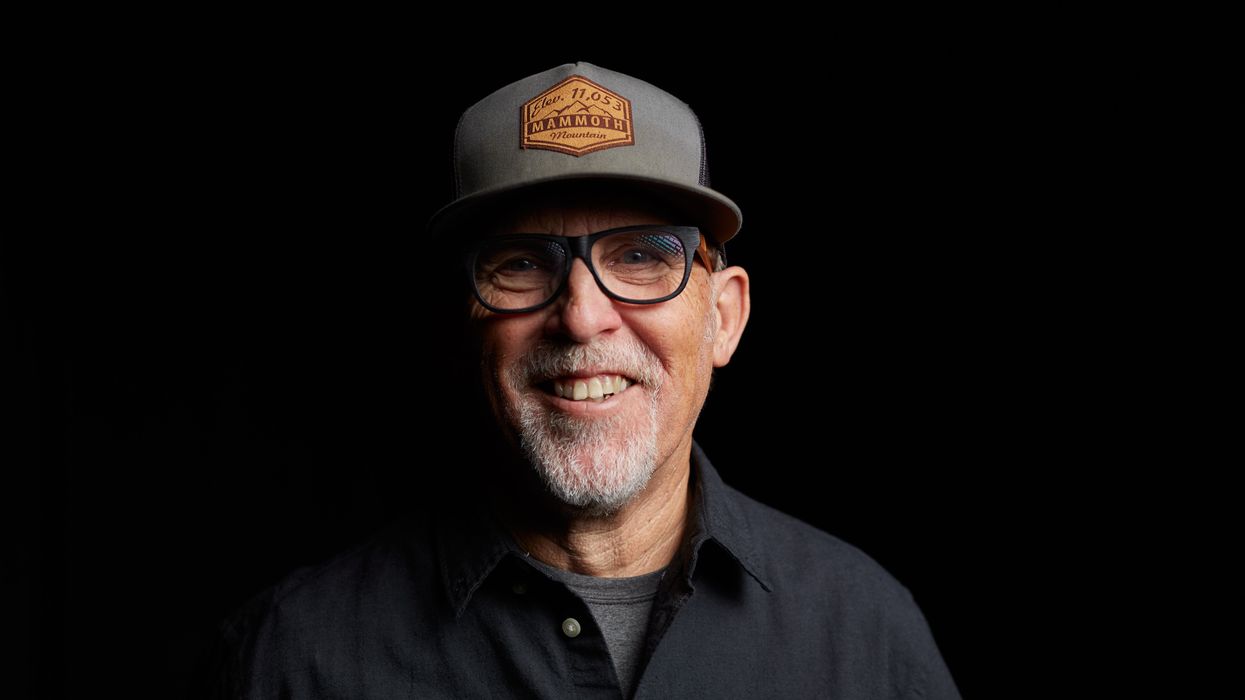If you survey the gear that shows up on stages and studios for long enough, you’ll spot some patterns in the kinds of guitar amplification players are using. There’s the rotating cast of backline badasses that do the bulk of the work cranking it out every day and night—we’re all looking at you, ’65 Deluxe Reverb reissue.
Follow some super-hip players and studios on the cutting edge and you’ll find a host of meticulously crafted boutique amps. And for the various flavors of road-dogs, there’s also the emerging force of modeling units that emulate everything under the sun.
Then there are the players who have to go to the source and are doing the tone-gods’ work by keeping vintage amps in the game. (There are a lot of us, and we take our work seriously.) At the highest level of stage and studio, you’ll find the elite vintage models—the tweeds, black-panels, plexis, and all their pals. Those amps command their fair share of literal and digital ink. Then there are the oddball selections that some new player will bring to everyone’s attention.
But there’s a less-hyped flavor of vintage amp that actually shows up much more often than those rare gems. These are the everlasting classics you’ve seen about a million or so times played by bands in every size of stage and lining the walls of your favorite studio. They’re the perennial workhorses whose reputations thrive because of some formula of tone, consistency, reliability, and—maybe the most important variable—price.
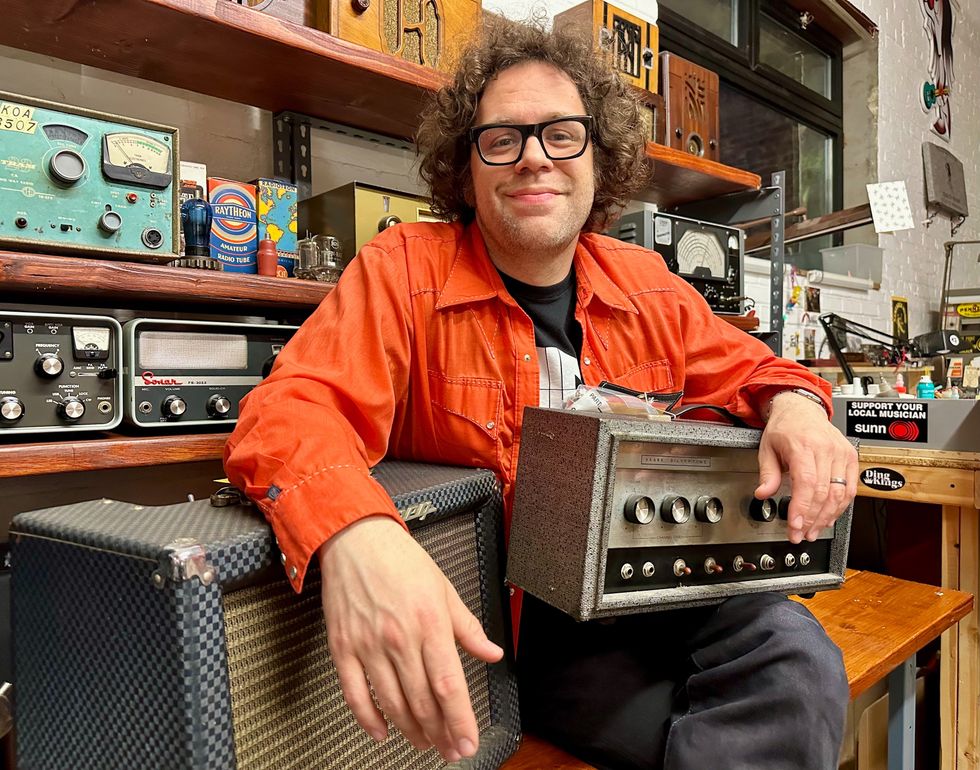
Brooklyn-based amp-repair guru Pat Kauffman operates Patrick Kauffman Electronics out of Main Drag Music, where he also teaches amp-building workshops.
Here are six of these vintage models, all priced to fit in a gigging budget, coming in right around $1,000 or less as of this writing. With a trio of experts on hand, here’s an idea of what makes each of these amps tick all these years after they were first introduced.
Silver-Panel Fender Bassman
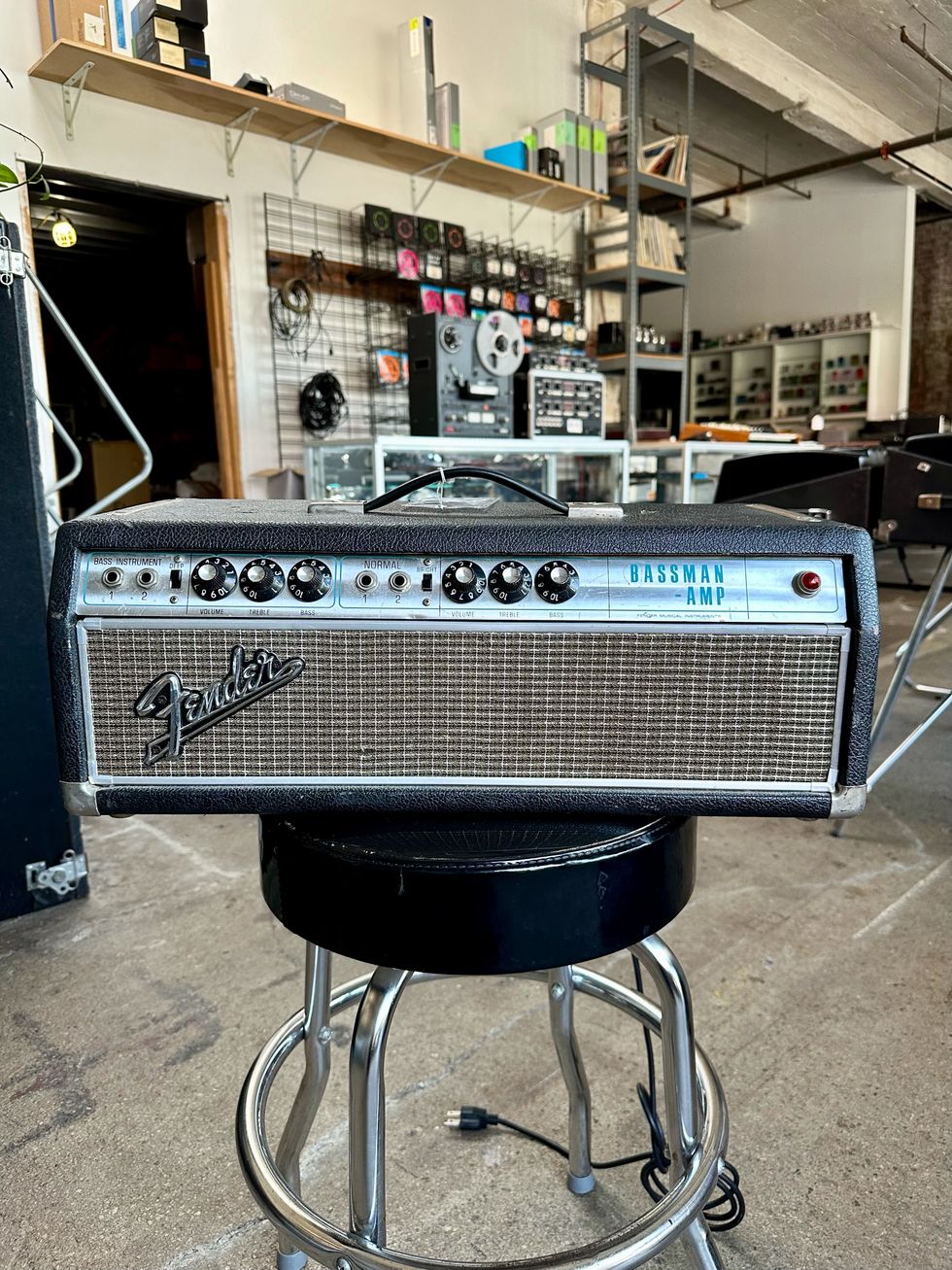
A drip-edge era Fender Bassman head.
Photo by Pat Kauffman
The Fender Bassman is, of course, one of the most classic amplifiers. The tweed Bassman circuit is one of the most copied and modified circuits of all, serving as a platform for so many designs to follow, most notably Marshalls, as well as a couple more on this list. By the time the silver-panel era began, first with the drip-edge years starting in 1967, the Bassman circuit had evolved from those early days through the also highly coveted black-panel era.
“The silver-panel is not that different from the black-panel,” notes Brooklyn amp-repair guru Pat Kauffman, “and you can easily modify them to black-panel specs—they’re the same transformers.” Both eras kick out 50 watts—though there are quite a few variations, such as Bassman 100, 135, and more than a few others, we’re simply talking about the “Bassman”—and host a tube set that includes a pair of 6L6 power tubes, a trio of 12AX7s, and an ECC81.
“I think the right person can get their own signature tone from these, and it’s not gonna be one that will come from a Fender, it’s not gonna come from a Marshall.” —Jeff Bober on the Ampeg Gemini
This era of Fender Bassmans deliver plenty of headroom, but unlike the Fender “reverb” amps, Kauffman points out there’s an extra gain stage, which he says “gives it a little more grit that makes them kind of unique.”
Jeff Bober, former PG amp columnist and cofounder of Budda Amplification, adds that the silver-panel Bassmans “compress earlier, which might be a little opposite of what they were going for, so you can push the front end a little easier.”
Even better, Kauffman points out that they’re “easily serviceable. That’s key number one—all the parts are available.”
Ampeg Gemini
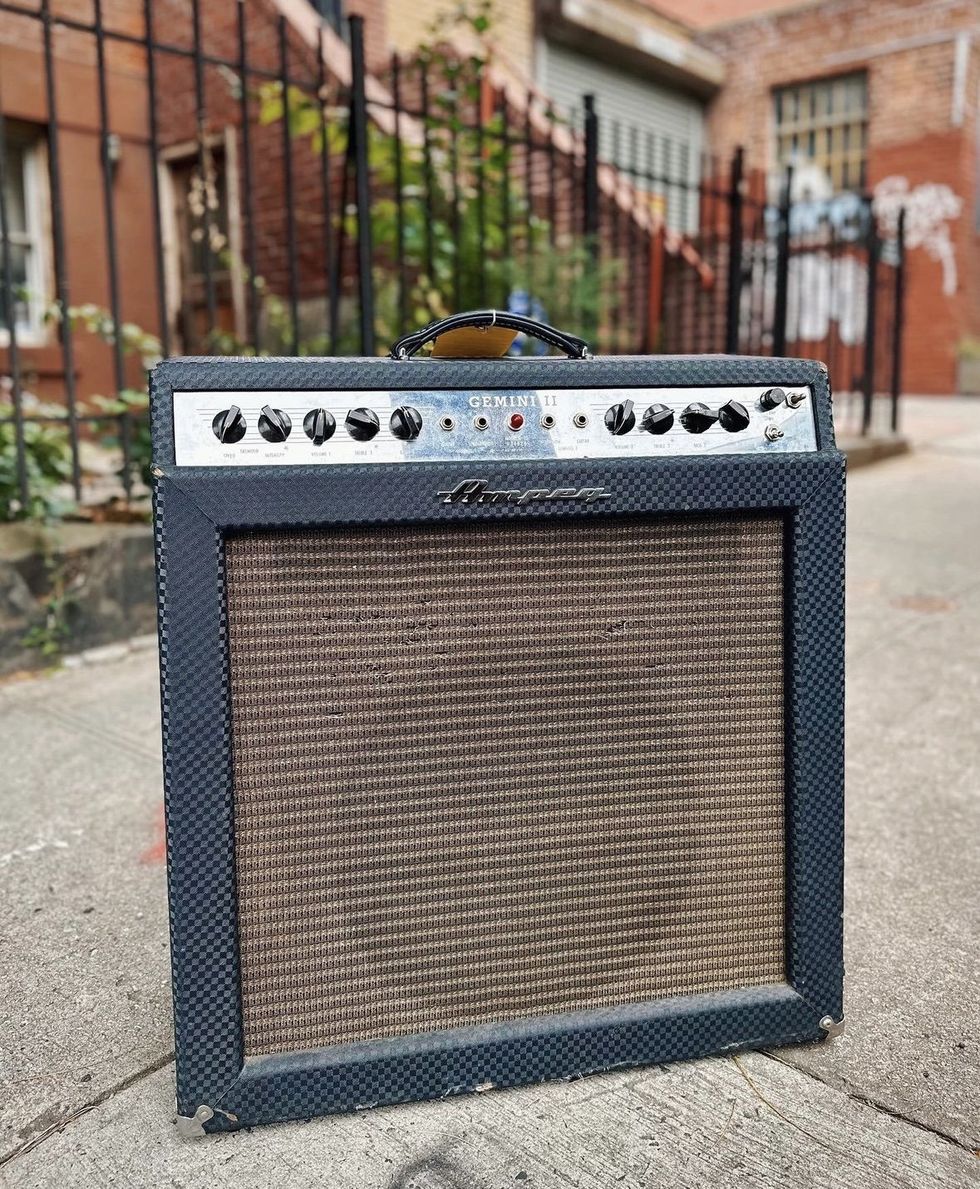
This Ampeg Gemini II combo includes a 15" speaker.
Photo by Pat Kauffman
If you feel like you’ve seen an Ampeg combo in most studios you’ve ever entered, you probably wouldn’t be exaggerating. And there’s a good chance that a lot of those were an Ampeg Gemini or Gemini II, offered starting in the mid ’60s, with a few variations over its life, from 22 to 30 watts, with speaker offerings ranging from a single 12" to a 15", and in later eras with more watts and more speaker configurations.
Because of their size, these are less common on stage than they are in studio, but Bober—who is a proud native of Ampeg’s hometown of Linden, New Jersey—says of the Geminis as well as the smaller, and also very cool, 12-watt Ampeg Jet, “They have their own unique sound, they’re not all that loud to start with so if you’re in a situation where you can crank an amp a little bit, these are really good to do it.”

Jeff Bober founded Budda and EAST Amplification and was the author of PG’s Ask Amp Man column.
These full-featured combos have onboard reverb and tremolo, and they use a set of 7591 power tubes. Bober points out these are “more of a hi-fi-sounding, very full-bodied tube” that he describes as “somewhere between a 6V6 and a 6L6 power-wise, but with a different tonality.” He adds, “I think the right person can get their own signature tone from these, and it’s not gonna be one that will come from a Fender, it’s not gonna come from a Marshall.”
While these amps are known for their reliability as well as well as their unique sound, Kauffman points out that the phase-inverter tube, a 7199, has gotten expensive in the modern market: “A lot of times, they’ve been changed out to different tubes, or they have a little converter adapter in, so that’s something to look out for.”
Traynor YBA-1 Bass Master
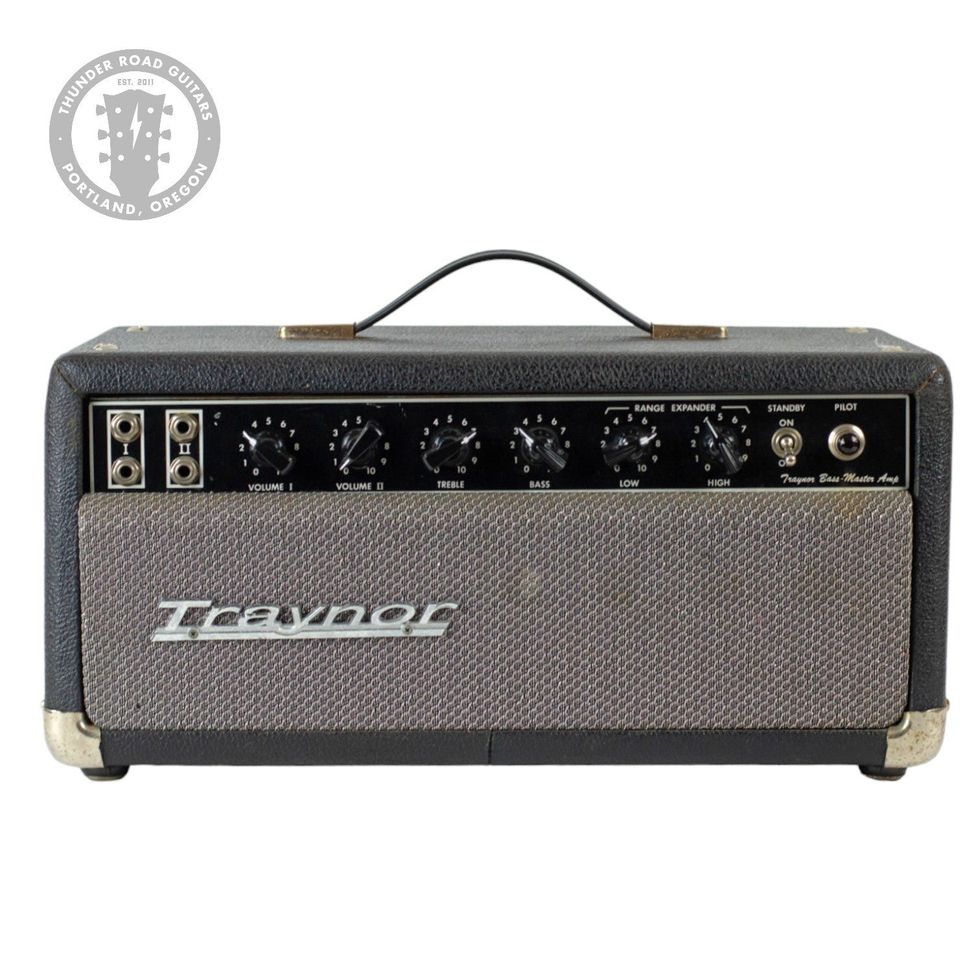
With two inputs per channel, it’s easy to “jump” channels with a patch cable to extend the voice of the Traynor YBA-1.
Photo by Thunder Road on Reverb
Beloved by both guitarists and bassists, the 45-watt Traynor YBA-1 circuit was the company’s first offering in 1963, when it was called the Dyna-Bass. By the next year, it was retitled the Bass-Master and the title stuck. While the company didn’t have the name recognition of a Fender or Ampeg, they developed an underground reputation that is still going strong. In 1969, Traynor provided the backline to 1969’s Toronto Rock ’N’ Roll Revival concert, where the Plastic Ono Band recorded their Live Peace in Toronto 1969 live album, and which was later celebrated in the 2022 documentary REVIVAL69: The Concert That Rocked the World.
The YBA-1’s simple 3-band EQ control set and 2-knob “range expander” make for easy tone-sculpting, and jumping the channels with a small patch cable opens its voice even wider. Kauffman calls the amp a “Bassman on steroids.” He points out that some models use 7027 power tubes—“basically a beefier 6L6”—and others use 6CA7s, plus a pair of 12AX7s and an ECC83. These amps are easily modified to replicate a JTM45 circuit, which is a popular change for some, but many players prefer to keep them unchanged.
“People who are Traynor fans are Traynor fans. They’ve either owned one and sold it and regret it, or they own three of them.” —Blair White on the Traynor YBA-1
Bober says that the YBA-1 is “built as good as any Fender or eyelet-board kind of design. They have probably the biggest transformers for their power rating of amps being built at that time. They’re very clean circuits, great pedal platforms, and they sound great.”
Blair White, owner of Nashville’s Eastside Music Supply, has witnessed the cult of Traynor firsthand and says, “People who are Traynor fans are Traynor fans. They’ve either owned one and sold it and regret it, or they own three of them.” Despite their reputation as well-made, reliable amps with a great tone, White notes that they’re still easy to get a hold of: “I don’t know if it’s just because it was not Fender or Marshall, but for whatever reason, you can still find those for $600 or $700.”
Sovtek MIG
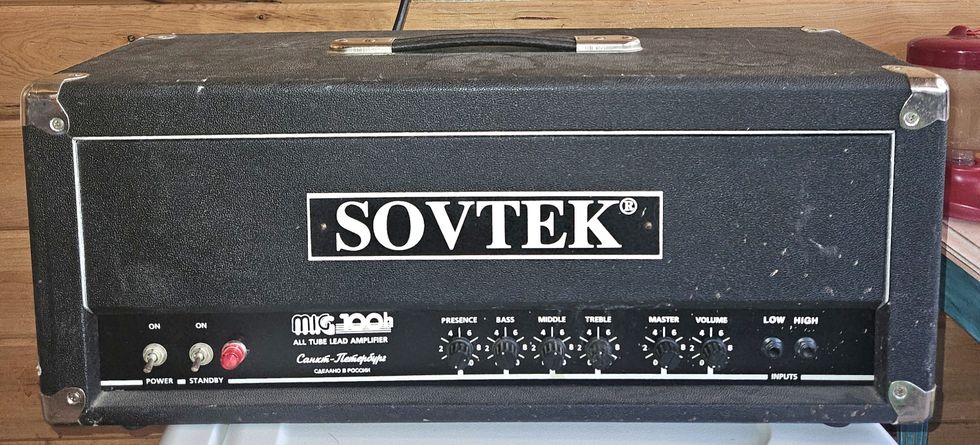
This Sovtek Mig 100h is the high-gain member of the Mig family.
Photo by Brent’s Gear Depot on Reverb
Built in Russia by New Sensor starting in 1991, this head, which came in 50-, 60-, and 100-watt models, is another spin on the same tweed Bassman formula that begat the JTM45 and the Traynor YBA-1. Running a pair of 5881 power tubes and a pair of 12AX7s, the MIGs featured a solid-state rectifier and a slightly slimmed-down control set from the Bass-Master, with two independent volume controls (non-jumper-able), a 3-band EQ, and a presence knob.
In an A/B comparison with the modern EHX MIG 50, where both sound identical (or close to it), JHS Pedals’ head honcho Josh Scott has gone on the record and called the MIG 50 his “favorite amp in the history of the world.” The modern ones tend to come in a little less expensive than the vintage models, which Bober points out have an “iffy” build quality thanks to their Eastern Block components.
“They have a cascading input, so there is an extra gain stage like the JCM800s.” —Pat Kauffman on the Sovtek MIG
Kauffman agrees, “They’re a little awkward to service. A lot of the hardware is kind of cheap, so you’ll often find the jacks busting and the pots busting.” You might want to look out for a deal if you’re considering a vintage model, which could be well worth your time. Kauffman adds that the MIGs have their own cult and calls them “fantastic-sounding amps. They have a cascading input, so there is an extra gain stage like the JCM800s, so they kind of have this Marshall sound but a little more rounded.” If Scott’s comparison tells us anything, the modern version is also worth checking out.
Music Man HD-130
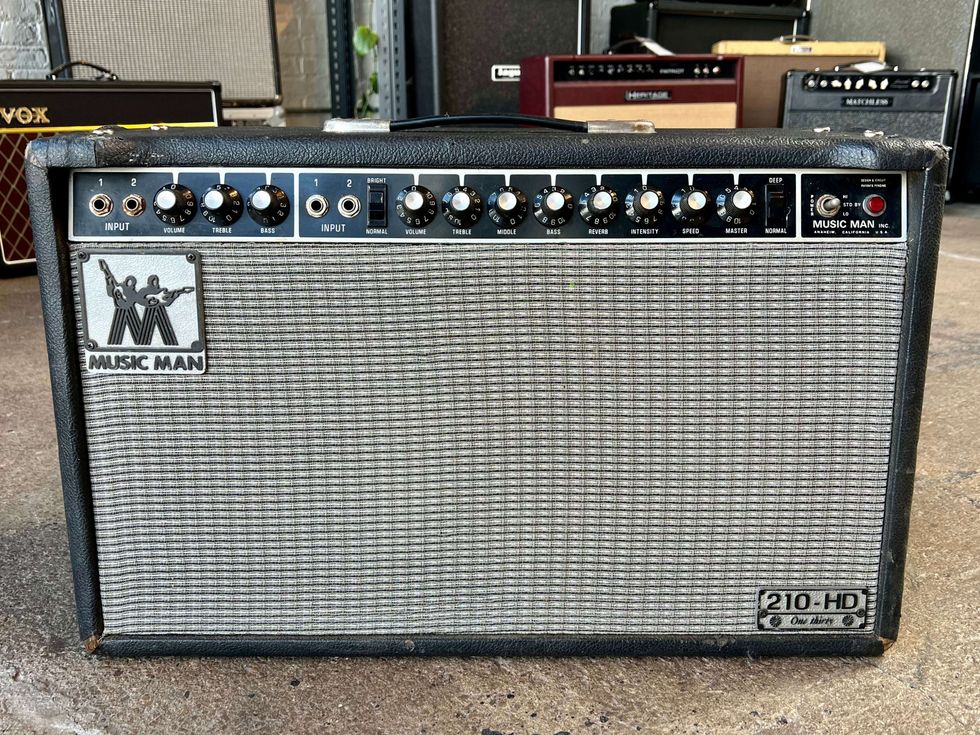
The powerful Music Man HD-130 in its oddball 2x10 form—that’s a lot of power to push through two little speakers!
Photo by Main Drag on Reverb
When Music Man amps hit the scene in the mid ’70s, they were unlike anything Leo Fender had set out to do with his previous designs. Gone was the simple, efficient circuitry of his earlier work. Instead, Music Man amps featured a hybrid solid-state preamp and tube power amp, with the clear target of maximum headroom.
The HD-130 was the most extreme of Music Man’s offerings, delivering a sizzling 130 watts via four 6CA7 power tubes and available in both head and combo form. (If that sounds too extreme, you could get it shrunk down to a small 2x10 combo… but with no less wattage!) The master-volume control set features two channels each with a 3-band EQ and a bright switch, plus combo models and some heads included reverb and tremolo.
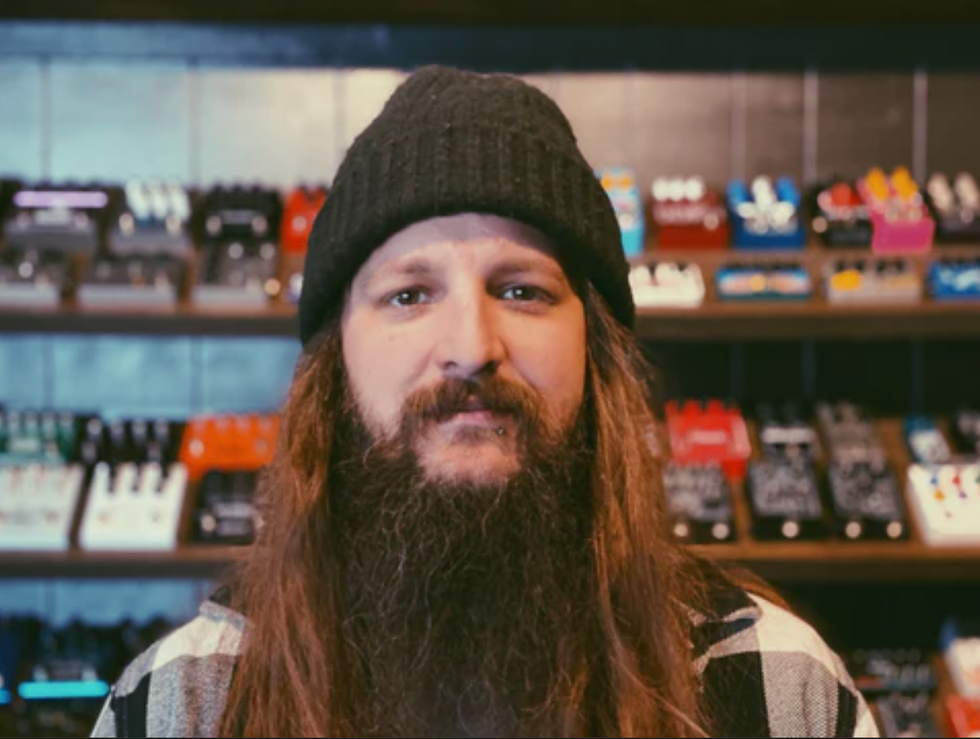
Blair White, co-owner of Nashville’s Eastside Music Supply, is so passionate that he spoke to PG while movers were loading the store’s gear into their new location!
“Those amps are punishing!” says White. “They’re probably the most bang for your buck that you’ll get as far as power and wattage. Their unique formula certainly got the attention of some major players, and Mark Knopfler, Robbie Robertson, and Johnny Winter all counted on them at some point.”
These days, Kauffman says they remain quite reliable, but issues can arise with modern tubes. “They use high plate voltages, which tends to eat new tubes,” he explains. “If you get the electrolytic caps replaced and have the tubes biased correctly, they really should be reliable. But if you’re having a problem, it’s usually cooking power tubes because they’re a new set.” He adds that, while tube supply changes, he currently finds JJ EL34s to hold up well against the HD-130’s high voltage.
Peavey Mace
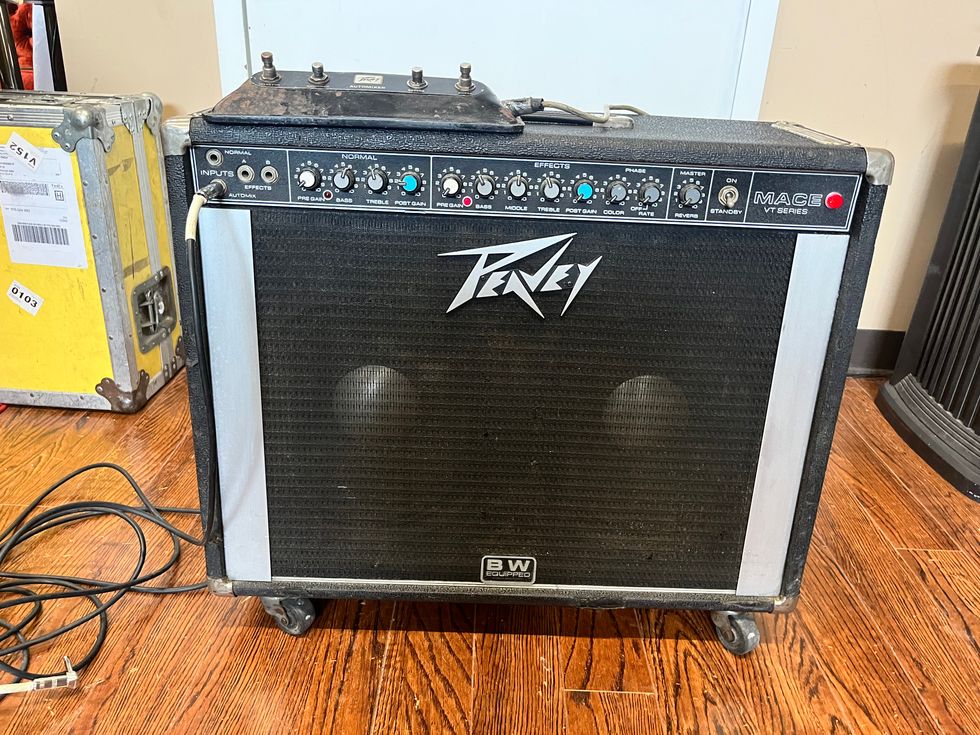
The 160-watt Peavey Mace promises extreme volume with high clean headroom plus onboard distortion and phaser.
Photo by Free Lunch on Reverb
No list of great-value amps is complete without a Peavey. Of course, their broad range of models over the years made it hard to decide which to include. At a whopping 160 watts, the Peavey Mace made the cut, if only for sheer power. It’s another hybrid amp, combining a whopping sextet of 6L6s in the power section with a solid-state preamp in both head and 2x12 combo form. Their clean headroom puts them in a class with the HD-130 and also put them onstage with Lynyrd Skynyrd’s Gary Rossington.
The Mace is less common than most of the others on this list, but late-’70s models are fairly easy to track down. Bober says, “If you want loud and clean, those are great amps.” But he notes that the Mace is “not the most accurate pedal platform. Drive or overdrive pedals tend to try and push the front end to get more juice, but things that have IC chips in the front end don’t respond the same way, they don’t agree to being pushed to their limits, and they don’t generate the same harmonics as a tube does.” The Mace has both a normal and effects channel, which includes distortion and reverb, as well as an onboard phaser.
Kauffman reports from his work bench that the Mace is “great and reliable.” He explains that these amps were built on a printed circuit board, and he tends to see bad solder joints when they come in for service. That’s nothing to be afraid of though. “If you have one,” he says, “you could get it cleaned up, change the electrolytic caps, and have it resoldered, and you should be fine.”
At 160 watts, you’ll want to make sure you have your earplugs handy.





